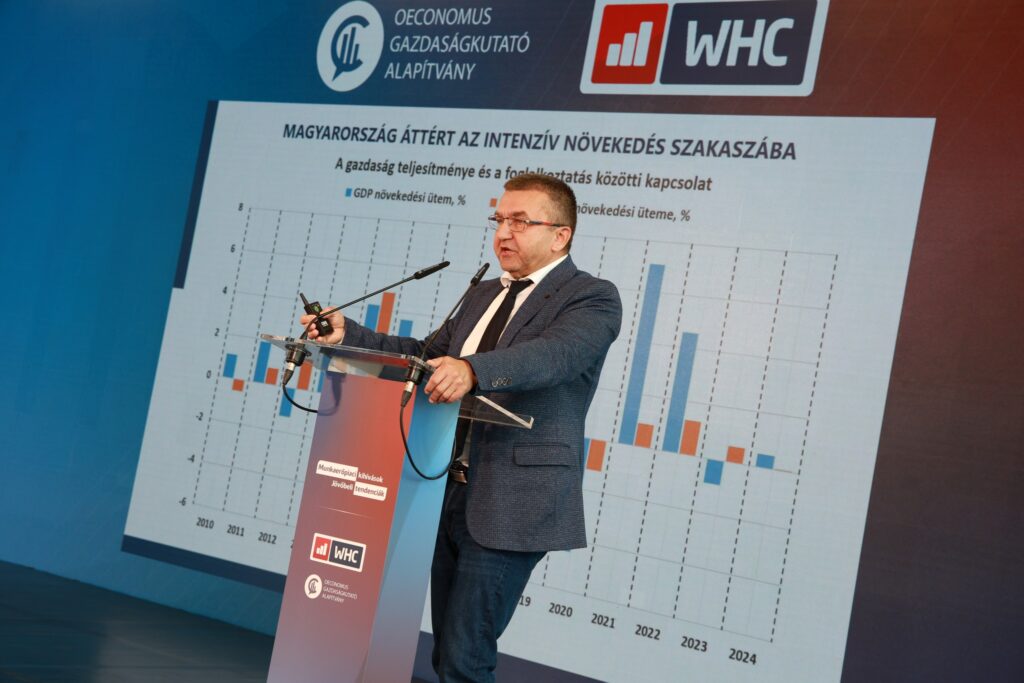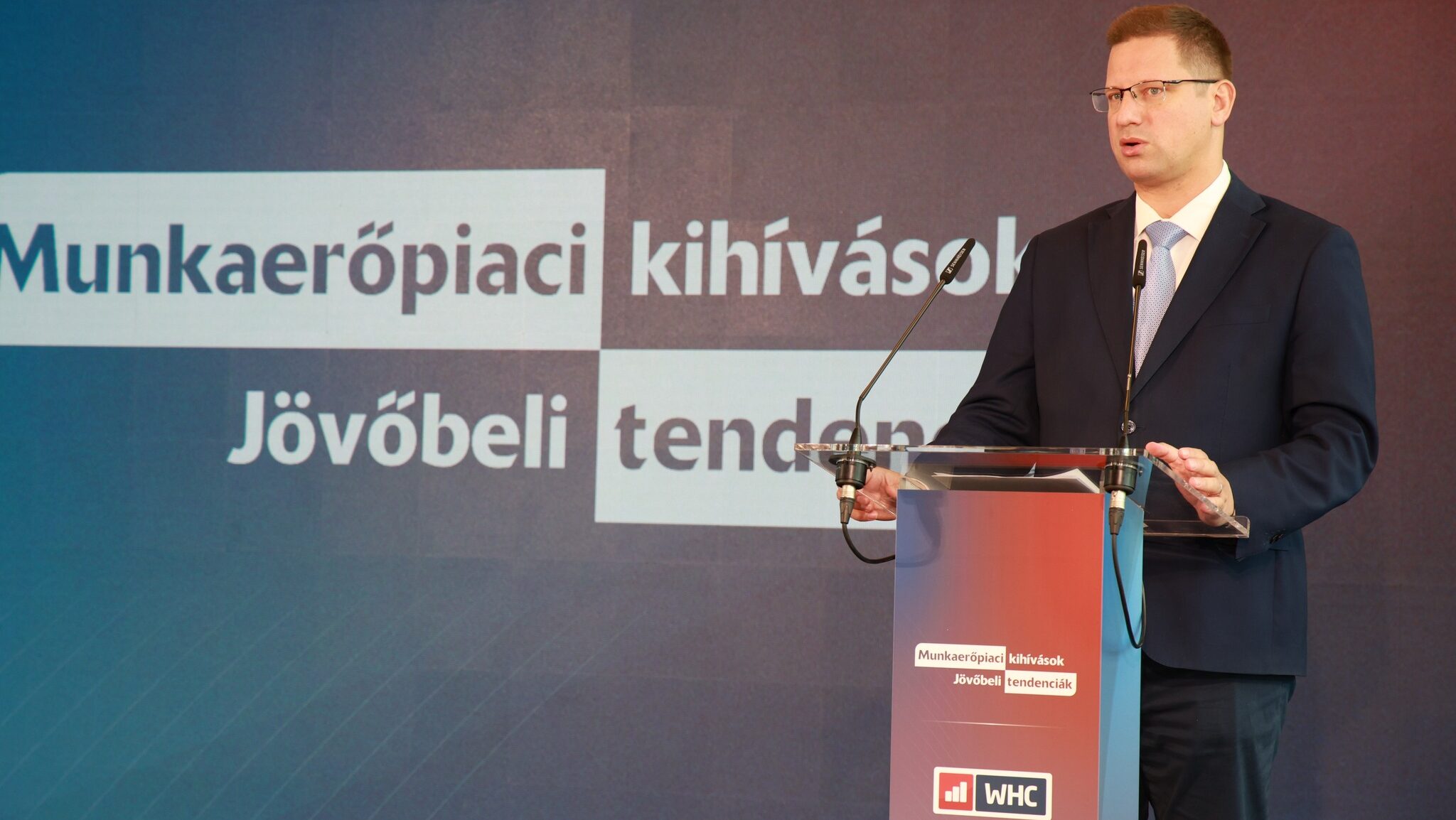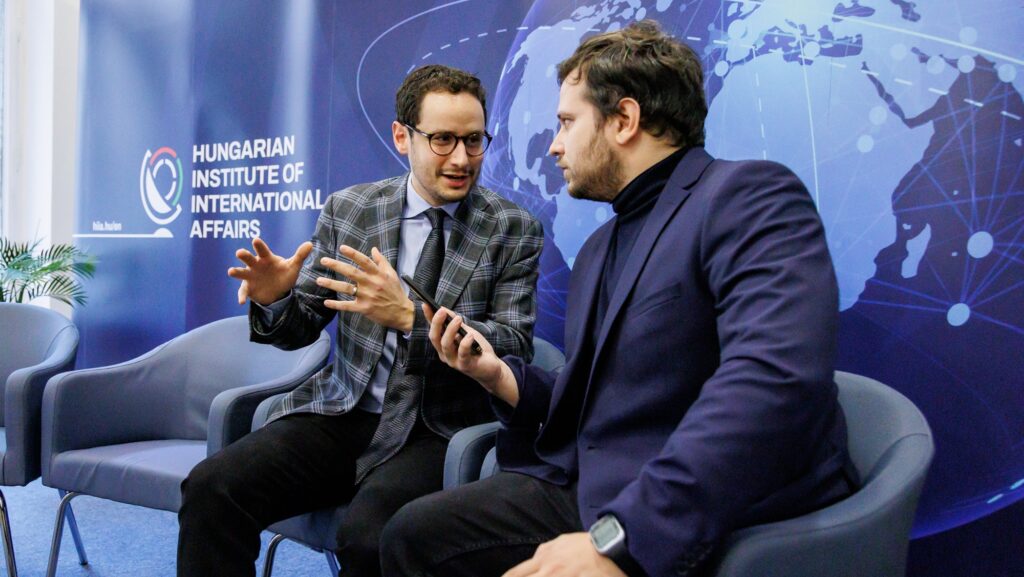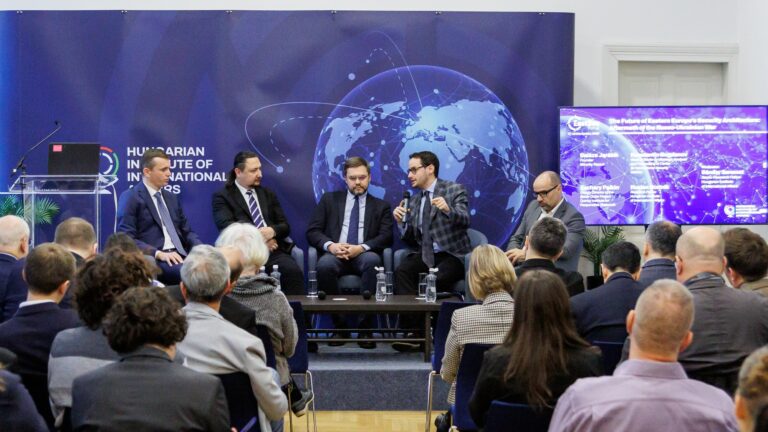Budapest-based think tank Oeconomus Economic Research Foundation and Hungary’s leading HR service provider, WHC, co-organized a conference on 15 May, focusing on the challenges and future trends of the labour market. Titled ‘Labour market challenges, future trends,’ the event brought together government officials, CEOs, and experts who shared their perspectives on how to make the labour market work for all stakeholders—employers, employees, and the state.
Resilient Labour Market
In his opening remarks, Minister of the Prime Minister’s Office Gergely Gulyás noted that two major challenges have defined the Hungarian economy in recent years: the COVID-19 pandemic and the war in Ukraine. He explained that the pandemic fundamentally reshaped the labour market, with alternative forms of employment emerging and persisting. While the war presents immediate security threats, its medium- and long-term impacts are primarily economic. ‘Soaring energy prices, general inflation, stagnation, or even recession,’ Gulyás listed among the consequences.
‘The greatest threat is the absence of peace—or the achievement of a bad peace,’ he highlighted. According to the minister, although there have been promising developments in global politics—referring to US President Donald Trump’s peace efforts—it remains uncertain whether the war will end anytime soon. ‘Peace provides the best chance for economic growth and risk reduction,’ he added.
‘The greatest threat is the absence of peace—or the achievement of a bad peace’
Discussing the state of the Hungarian labour market, Gulyás stressed key achievements since 2010, including one million additional people in employment, employment growth outpacing both regional and EU averages, and an unemployment rate consistently below the EU average. ‘In Hungary, those who want to work, do work,’ he said, noting that labour shortages remain the main challenge. Still, he concluded, the Hungarian labour market has demonstrated resilience throughout recent crises.
Péter Törcsi, Chairman of the Board of Oeconomus, concurred, stating that since 2020, Hungary and Europe have been in a state of ‘permacrisis’—with external factors driving ongoing disruptions. ‘The election of Trump and the new pope signal renewed geopolitical momentum,’ he said. Törcsi concluded that Hungary’s economy and labour market are more resilient than ever before.

Key Trends Defining the Labour Market in 2025
At the conference, Oeconomus and WHC jointly presented a comprehensive study on labour market trends, challenges, and future directions. The research offers detailed analysis, data-driven forecasts, and strategic policy recommendations, taking into account global and domestic economic trends, demographic shifts, and the complex challenges posed by digitalization. Particular attention was paid to labour supply constraints, current skills gaps, brain drain, the rise of flexible work arrangements, and ways of integrating inactive groups—such as young people, mothers with small children, and persons with disabilities—into the workforce.
The findings were presented by Szabolcs Pásztor, Director of Research at Oeconomus. He explained that the report also includes a representative survey of 2,000 Hungarian workers, covering topics such as work values, attitudes toward remote work and commuting, and interest in further training. The results show a growing emphasis on working conditions tailored to individuals’ life situations and preferences.

While competitive salary remains the most important factor for job selection, cited by 60 per cent of respondents, a friendly work environment and proximity to home were also highly valued (34 per cent each). In evaluating their current jobs, respondents prioritized a friendly atmosphere (78 per cent), proximity to home (77 per cent), and job security (72 per cent). Notably, only 49 per cent listed salary alone as a key factor in their current employment.
According to the study, 49 per cent of respondents commute to work, with 80 per cent travelling less than an hour daily. Yet only 73 per cent receive any commuting benefit. Meanwhile, 59 per cent believe that the option of working from home would be an effective way to mitigate commuting challenges.
‘Our aim is to provide up-to-date data, in-depth analysis, and practical insights to support decision-makers, HR professionals, and the corporate sector across a wide range of areas,’ Péter Berta, Managing Director of WHC Group, said.
Challenges Ahead
State Secretary for Employment Policy at the Ministry of National Economy, Sándor Czomba, also addressed the conference. He noted that the government agrees with most of the study’s conclusions. ‘If we want results, we must work together with employers,’ he said. Czomba reported that there are currently around 230,000 active jobseekers in Hungary and another 60,000 inactive individuals who are more difficult to reach, as there is little information available about them.
Reflecting on the past decade, Czomba underlined that labour productivity and the business environment in Hungary have significantly improved. Since the pandemic, labour market participation has steadily increased, and employment levels remain stable. ‘The government has a broad toolkit of employment policy measures to support job creation, including wage subsidies and EU-funded mobility programmes. Access to housing and travel assistance for newly employed workers is a key factor in helping them find work,’ he concluded.

The conference also featured panel discussions offering in-depth analysis of the labour market from both employer and governmental perspectives. A wide range of topics was covered, including the potential of the 600,000 to 700,000 Hungarians currently working abroad and how to encourage their return—a factor considered vital for the country’s long-term economic stability. Regional examples suggest that financial incentives, such as temporary tax exemptions, play a key role in attracting returnees. In 2024, 28,000 Hungarians chose to return home after working abroad.
Hungary Steps Up as Regional AI Power
As the ‘grand finale’ of Thursday’s conference, Government Commissioner for AI Development László Palkovics addressed the audience via an AI-generated avatar. He emphasized that we are living through the fourth industrial revolution—one driven by artificial intelligence. According to Palkovics, Hungary aims to become a regional leader in AI through a renewed national strategy focused on leveraging data assets and delivering practical, impactful projects. The strategy includes educating one million citizens about AI, training 100,000 specialists, and expanding university and vocational programmes. Significant investment is planned in infrastructure, too, including increased supercomputing capacity and support for 200 AI start-ups by 2030.
Palkovics underscored that AI should be viewed as an opportunity—not a threat. ‘If successfully implemented, this strategy could increase Hungary’s GDP by at least 15 per cent by 2030, outperforming regional and global trends,’ he added. ‘Ladies and Gentlemen, Hungary has the capacity to prepare; the future is in our hands, and it is up to us how we shape it,’ Palkovics—via his avatar—concluded.
Related articles:







